What You Need To Know About Getting An ACL Reconstruction in Singapore
We have two cruciate ligaments in each knee, the anterior cruciate ligament (ACL) and posterior cruciate ligament (PCL). They are situated in the middle of our knees connecting our femur and tibia bones together. In the event of an ACL rupture, a common procedure performed in Singapore is an ACL reconstruction.
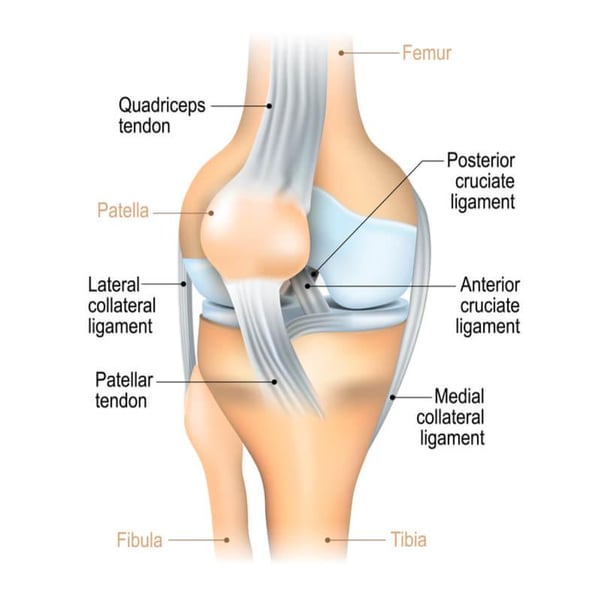
The ACL provides stability to our knee when we twist and pivot during daily activities and strenuous sports. The ACL itself is an extremely strong structure but can still rupture if excessive force is applied to it! This happens in sports that involve sudden stops or change of direction at speeds while the foot is firmly planted to the ground, such as football, basketball, or skiing, to name a few. Some athletes sustain an ACL rupture due to a direct blow to the knee or a collision such as a football tackle.
How do I know if I have suffered an ACL rupture?
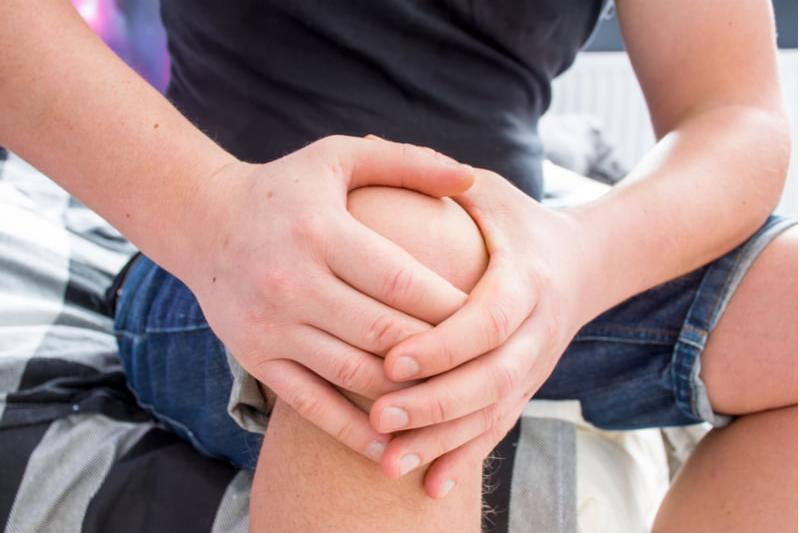
Many patients hear a ‘pop’ or feel a popping sensation when they rupture their ACL. This may be associated with knee pain, swelling and inability to walk due to instability.
The initial treatment for ACL ruptures is to rest, apply ice to the knee and take anti-inflammatory medications to ease the pain. Your orthopaedic surgeon will organise an MRI scan to confirm the diagnosis of a ruptured ACL and to exclude other associated injuries in the knee such as a meniscus tear.
It is extremely important to undergo a course of physiotherapy and rehabilitation after an ACL rupture to maintain the strength of your quadriceps muscles and stability of your knee. A very unstable knee after an ACL rupture may lead to meniscal tears and arthritis in the medium to long term.
What can I do to prevent an ACL rupture during sports?
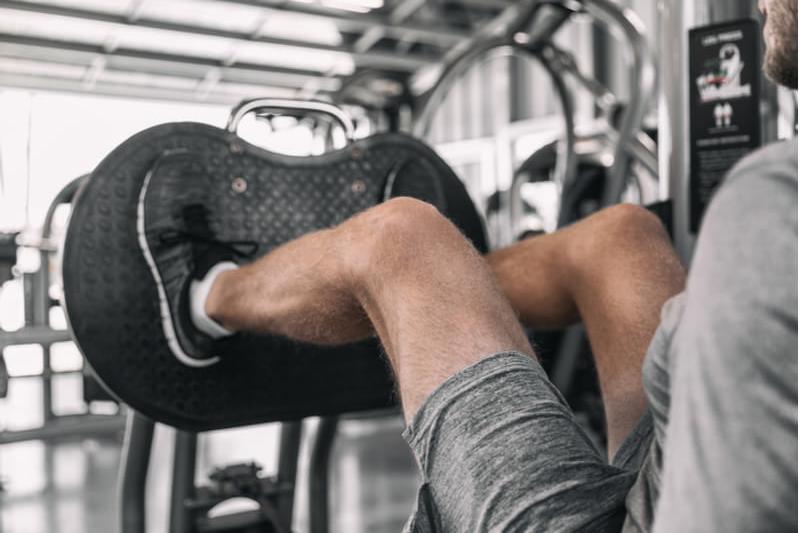
As an athlete, it is important to undergo strength training and maintain good muscle bulk and control. Strong muscles around a joint help prevent falls and sports injuries. It is critical to be in good physical condition before participating in contact or high intensity sports. Appropriate sportswear also helps prevent sports injuries.
Here are some factors which may put one at risk of an ACL rupture. These include:
- Poor physical conditioning
- Participating in certain pivoting sports: basketball, football, volleyball, skiing
- Playing on artificial turf
- Poorly fitting or maintain sports equipment
- Being female: due to differences in anatomy, strength and hormonal influences.
What is an ACL reconstruction?
Previous attempts to repair ACL ruptures have been abandoned as they led to unacceptably high levels of knee stiffness and loss of function.
These days, ACL-deficient knees undergo ACL reconstruction to restore their stability and function, allowing patients and athletes to return to their active lifestyles and sporting ambitions. The ACL is reconstructed using a graft, which may be obtained from a variety of sources. Autografts are tissue that is obtained from your own body while allografts are tissue taken from a donor.
- Hamstring autograft
- Bone-patella-bone autograft
- Quadriceps tendon autograft
- Tendon allograft
The type of graft used will depend on multiple factors including patients’ age, nature of physical activities and surgeon’s choice. Hamstring autografts are currently the most popular type of graft used worldwide and is the graft of choice at Orion Orthopaedic Surgery.
How does an ACL reconstruction work?
The ACL reconstruction surgery is done as a keyhole or minimally invasive procedure. It takes about 90 minutes and patients are usually under general anaesthesia.
Dr Mizan will initially inspect inside your knee through an arthroscope to confirm the complete rupture of your ACL and exclude any other injuries, such as meniscal tears or cartilage degeneration. Once this is done, an accessory skin incision of about 3cm is made just beyond the knee in order to harvest your two hamstrings (semi-tendinosus and gracilis). These hamstrings will be prepared as your new ACL graft.
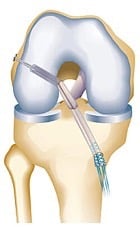
Two bone tunnels are made across the proximal tibia and distal femur to accommodate your new ACL graft. Once this is done, the graft is pulled through the tibia and femur tunnels before it is secured with implants at both ends.
Your knee will then be protected in a knee brace for the next 4 to 6 weeks as you recover from surgery. Patients will also be allowed to walk with the help of two crutches.
When would an ACL reconstruction be required?
After the initial pain and swelling has subsided, most of my patients can still walk and do some amount of exercise even without an intact ACL. Sports such as brisk walking, gentle jogging, cycling and swimming are largely done in one direction and does not involve significant pivoting or twisting of the knee. If you mostly participate in such sports or only have a partial rupture of your ACL, then ACL reconstruction surgery may not be necessary for you.
If you intend to participate in lots of pivoting sports such as football or basketball, an intact ACL is crucial for you to maintain your balance and performance during such sports. In those instances, an ACL reconstruction would be strongly encouraged to prevent recurrent falls and further aggravating the injury.
Dr Mizan ensures his patients undergo good physiotherapy rehabilitation after their injury, with or without surgery. This is to help reduce the knee swelling and maintain the strength of knee stabilizer muscles (quadriceps, calf and hamstring muscles).
A knee brace is also used to stabilise the knee; knees that are very unstable may lead to secondary injuries to the meniscus and cartilage. Many patients with ACL ruptures feel better after several weeks of physiotherapy and treatment. They may feel good enough to return to sports but may still experience instability in their knee.
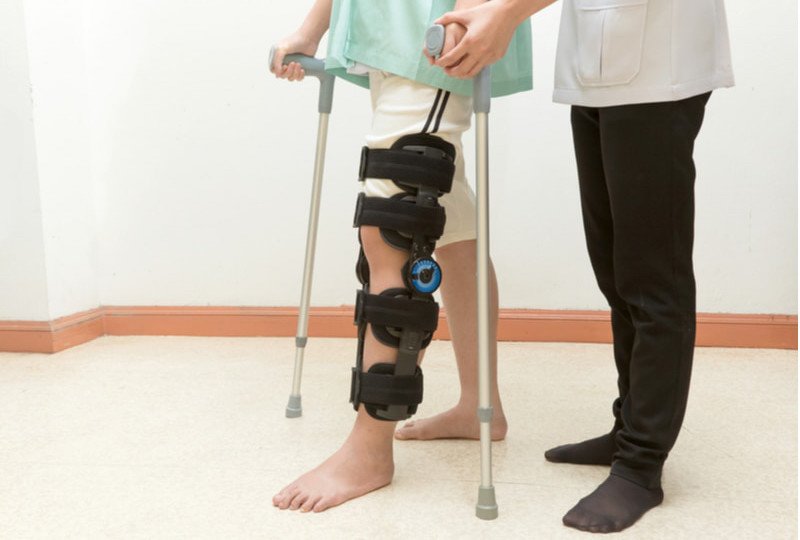
If they have decided to undergo surgery, a good time to perform ACL reconstruction surgery is when the knee swelling has significantly reduced and my patients have undergone some physiotherapy. This may take a month or two.
What can happen if you don’t get appropriate treatment?
An ACL-deficient knee may lead to instability and cause the patient or athlete to fall during pivoting sports. This may lead to secondary injuries such as meniscus tears, cartilage degeneration and ligament sprains.
How much does an ACL reconstruction cost?
The ACL reconstruction surgery is insurance- and Medisave-claimable. The cost of the surgery and hospitalisation will vary depending on whether you have the surgery in a public or private hospital. Based on Ministry of Health guidelines, the approximate cost of ACL surgery and hospitalisation in a private hospital is about $28,200. This includes doctors’ fees, facilities and implant costs.
Recovery after an ACL reconstruction
Physiotherapy is a critical aspect of rehabilitation as it helps maintain the strength and function of the quadriceps muscles, which in turn controls knee stability. Physiotherapy also facilitates reduction in swelling and flexibility of the knee while it recovers from surgery.
An estimated timeline of the recovery process after an ACL reconstruction is as follows.
Week 1-2
- Regular icing and elevation to reduce knee swelling
- Use of knee brace and crutches are imperative
- Passive movement of the knee
- Strengthening exercises for the quadriceps, hamstring and calf muscles
Week 3-4
- Improving gait and work towards walking with one crutch
- Passive and active movement of the knee
- Strengthening exercises for the quadriceps, hamstring and calf muscles
Week 5-6
- Use of the knee brace is progressively reduced
- Increasing the intensity of muscle strengthening, general movements of the knee
- Progression of exercises depend on muscle strength, pain and swelling
Week 10
- Forward, backward and lateral dynamic movements
- Isokinetic exercises
Month 3
- Functional exercises such as running, jumping
- Quicker changes in direction will be introduced as proprioception and coordination improves
Month 4-5
- Maximise endurance and strength of knee stabilizing muscles, improve neuromuscular control
- Acceleration and deceleration exercises with variations in running and turning
When can I return to contact and high-intensity sports?
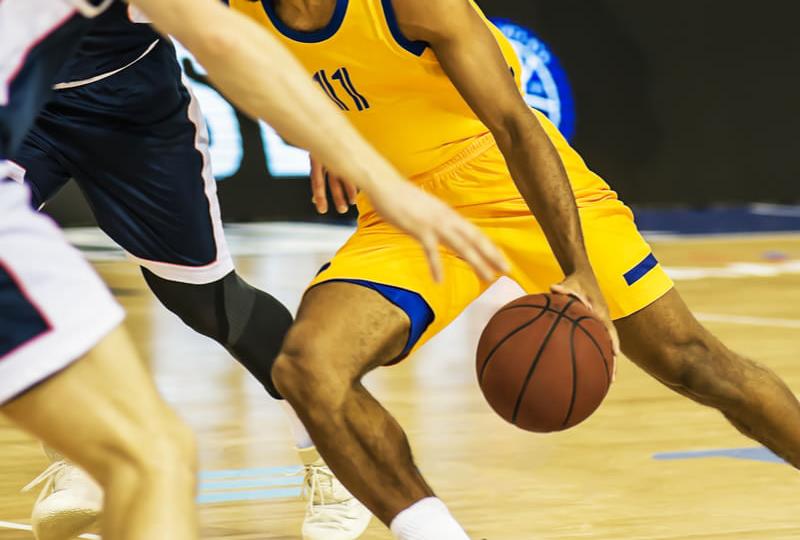
We generally do not recommend returning to sports such as basketball or football for 10 to 12 months after surgery. The new ACL graft actually undergoes remodelling and change in the body about 6 months after surgery; this is when it is at its weakest. The next 6 months is important in strengthening the muscular knee stabilizers and prevent the new graft from re-rupturing.
For patients and athletes who participate in non-contact sports or activities that do not require a change in direction at speed, it is safe to return to these low-risk sports after good rehabilitation at about 4 to 5 months. Your physiotherapist and orthopaedic surgeon will give you specific advice based on your recovery and sporting activities.
Possible complications
Leg weakness and pain
This is often due to wasting and underuse of the quadriceps muscle over a period of time. We ensure that our patients resume their physiotherapy as soon as possible to prevent this from happening. Physiotherapy is an important facet of treatment for all patients with ACL ruptures, with or without surgery.
Re-rupture of the ACL graft
It is important not to return to pivoting or high intensity sports too soon as it may cause the new ACL graft to rupture. The body tries to break down the graft as it undergoes remodelling. During this time, the graft is at its weakest and should not be stressed. We advise our patients to only return to sports such as basketball and football about 12 months after their ACL reconstruction surgery.
An allograft (graft tissue obtained from a donor) is about 5 times more likely to rupture than that of an autograft (graft obtained from the patient). This is because allografts undergo sterilisation to prevent any potential transfer of infection from donor to recipient.
Patients younger than 20 are at higher risk of re-rupture of their ACL graft than those above 20 years old; this is likely related to the level of physical activity and sports in this particular age group.
Infection
While infection after an ACL reconstruction surgery is rare, we do take all precautions to prevent this. Our patients are asked to bathe in an anti-septic wash (chlorhexidine) the day before and the morning of surgery. This helps to rid the skin of any colonising bacteria. Our patients also receive prophylactic antibiotics before and after surgery as prevention is always better than cure. The small skin incisions also help reduce the risk of infection in our patients.
Managing ACL tears with appropriate treatments
Ruptures of the ACL are common sports injuries that occur in athletes participating in pivoting or high intensity sports. These injuries have to be managed well with both conservative and surgical methods to allow athletes a timely return to the sports they love. Reconstruction of the ACL offers optimal results when done by an experienced surgeon and complemented by robust physiotherapy and rehabilitation.
Know your options about the common sports injuries or if you have ruptured your ACL by scheduling an appointment with our orthopaedic surgeon Dr Mizan Marican.
Is it alright to walk around with a sprained ankle?
This depends on the sprain's severity and what treatment has been rendered for the injury. Your doctor may advise you to only put minimal weight on your ankle while it is still recovering from the injury. Excessive walking may lead to more pain and swelling if the injury is stressed too early on.
How do I know if my ankle sprain is serious?
The nature of the initial accident or injury will provide a good idea about how fast it may recover. A serious injury is characterized by severe pain, swelling, and recurrent sprains despite efforts to support and treat it. If you are experiencing these, the soonest visit to the specialist is highly advised.
Can I claim insurance for my ankle injury?
Ankle sprains and injuries are insurance claimable. We do advise our patients to check with their personal or corporate insurance plans and representatives. We are also able to help them with this if required.
What should I do immediately after an ankle sprain while waiting for my appointment and treatment?
Timely self-care with rest, icing, compression, and elevation are important to manage the initial pain and swelling around the ankle. Anti-inflammatory medication will further reduce the pain and swelling that you may be experiencing.
I have more questions, how can I speak to a doctor?
Please call us at +65 6733 4565 (during office hours), or drop us a text or WhatsApp message at +65 9766 4565. We will reply to your queries as soon as we get them. You may also call to make an appointment to see Dr. Mizan for your ankle injury.